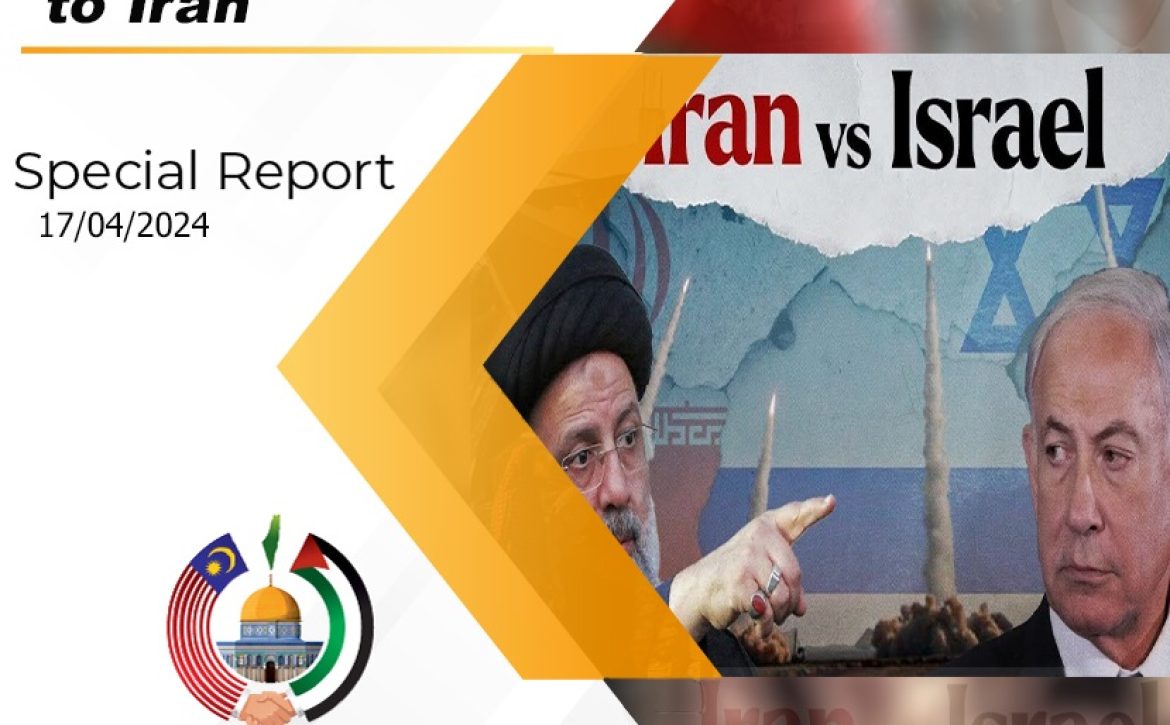In Prisoners’ Day: Palestinians continue the struggle from inside and outside the prisons
Mahmoud Bakr Hijazi was considered the first prisoner in the history of the modern Palestinian revolution. He was arrested after carrying out, along with other resistance fighters, the Beit Jibrin Fedayeen operation. Initially sentenced to death, his sentence was later commuted to 30 years in prison. He was released in 1971 as part of the first prisoner exchange deal conducted on Palestinian soil, known as the “prisoner for prisoner” exchange.
The Israeli Prison Service refers to Palestinians it arrests as “security prisoners,” restricting their freedom and labeling them as “terrorists” for carrying out hostile and sabotage acts against Israel. However, they see themselves as resistance fighters against an occupation seeking to displace them from their land and strip them of their dignity.
Israel has resorted to individual and collective arrests as punishment for Palestinians, with more than a million cases of detention carried out since its occupation of the West Bank in 1967. The most significant of these detentions were post the latest war on Gaza on October 7, 2023, followed by over 8,000 arrests within just six months thereafter.
Nevertheless, the occupation has not dampened the determination of the prisoners nor has it been able to deter them or the Palestinian people as a whole. Instead, they have turned the ordeal of imprisonment into an opportunity, producing scholars, intellectuals, and writers who continue their struggle both inside and outside the prisons even after their release.
Their numbers are multiplying
Before the seventh of October last year, the number of prisoners reached around 5,000, including 160 children and 30 female prisoners, as well as 22 veteran prisoners (pre-Oslo prisoners), the oldest of whom is the prisoner Mohammed Al-Tous. Additionally, there were 11 prisoners who were released in the Wafa Al-Ahrar deal (Shalit deal) in 2011 but were re-arrested by Israel in 2014.
After the Al-Aqsa Flood operation, more than 8,000 arrests were recorded in the West Bank and Jerusalem, including 272 women (detainees from the occupied territories in 1948, Gaza, and the West Bank), and 500 children, with hundreds more arrested from Gaza.
Currently, there are over 9,400 prisoners in Israeli prisons, including 71 female prisoners, 200 children, and 700 prisoners suffering from various illnesses.
The Israeli authorities have employed all means to torture and punish Palestinian prisoners, from chasing and arresting them to transferring them to prisons, interrogation centers, and courts, accompanied by various violations. This includes the notorious “Bosta” prison bus with iron seats, where prisoners are transported bound and blindfolded for up to 12 hours in a journey that would normally take no more than two hours under normal conditions.
The courts and laws
Israel enacted unjust laws against prisoners, especially the law allowing the trial of children under 14 years old, another law depriving them of education, and a third law enabling the confiscation of their financial entitlements.
Perhaps the most dangerous is the law of force-feeding for hunger-striking prisoners to obtain their rights. Israel also legalized the detention of their bodies and currently holds 496 bodies (excluding martyrs’ bodies in Gaza post-war) in numbered graves and refrigerators, including 27 prisoners.
Furthermore, a bill proposing the execution of prisoners was introduced in 2015 but has not been approved by the Knesset yet, despite public calls by Itamar Ben Gvir, the Minister of National Security, in November of last year.
However, Israel has not dropped its high sentences from its agenda (561 prisoners sentenced to life imprisonment). More than 500 prisoners who have spent over 20 years in prison are described as “generals of patience,” in addition to prisoners with open-ended life sentences like Abdullah Barghouti, sentenced to 67 life sentences, and Nael Barghouti, described as the world’s oldest prisoner with 44 years served.
Even more concerning is Israel’s use of administrative detention policy (where the charges are kept secret), which over 3,660 prisoners currently face. The prisoner remains at the mercy of the occupation intelligence, which governs and renews their detention without cause.
Detention multiple times
Experiences have shown that nothing has deterred Palestinians, due to their belief in the legitimacy of their struggle and their right to live freely and peacefully on their land. Fuad Al-Khafsh, a researcher on prisoners for Al Jazeera, states that 75% of Palestinian prisoners have been re-arrested more than once because they continued their struggle even after their release.
He added that some prisoners are currently being detained for the 30th time, like Sheikh Hassan Yousef, and others for the 15th time, like prisoner Nazeih Abu Aoun. Many from various Palestinian factions and their leaders, such as Marwan Barghouti, Ahmed Saadat, and Abbas Al-Sayed, have been arrested multiple times by Israel.
Prisoners have not been devoid of means to obtain their rights within prisons or even to free themselves. They have resorted to hunger strikes and have engaged in 26 collective hunger strikes since 1967, along with hundreds of individual strikes.
Among these was the Ashkelon Prison hunger strike in 1976, which lasted for 65 days, and the Nafha Prison strike in 1980, where four prisoners were martyred. The “Mother of Battles” strike in 1992 was also notable, involving 7,000 prisoners, with one of them martyred. More recent strikes include the “Dignity Will Live” strike in 2012 and the “Dignity” strike in 2017.
The late martyr Sheikh Khader Adnan initiated his hunger strike in 2011-2012, which lasted for 65 days, paving the way for modern individual strikes, with dozens of prisoners following suit, some striking for over 100 days.
Israel arrested hundreds in Gaza after October 7th and deemed them “unlawful combatants,” with around 850 prisoners remaining detained, their whereabouts concealed by Israel, held in military camps near Gaza and secret prisons in the Negev like Sedeh Teiman and Eitanim.
An Israeli military doctor revealed that some prisoners, due to their continued restraint for days and weeks, had their limbs amputated. Israel also admitted to killing 27 Palestinians from Gaza prisoners.
One of the most alarming things faced by prisoners after the Al-Aqsa Flood operation were sexual assaults, including rape of female prisoners.
The Path to Liberation
According to the families of prisoners and also resistance factions, only through force can prisoners be liberated. Neither politics nor peace negotiations with Israel have succeeded in freeing any of them.
This force is manifested in Israeli capture operations, especially targeting soldiers, and in making exchange deals. Palestinian resistance has succeeded in achieving this in ten exchange deals from 1968 to 2011. These deals have been and remain the sole hope for prisoners to regain their freedom.
The most famous exchange agreements were the first “Jalil Deal” in 1983, the second known as the “Ahmed Jibril-Popular Front-General Command” deal in 1985, and the “Wafa al-Ahrar” (Shalit) deal in 2011. In these deals, the Palestinian negotiator imposed his conditions, leading to the release of thousands of Palestinian prisoners, including those with high sentences or life imprisonment, in exchange for three Israelis in the first deal and Israeli soldier Gilad Shalit, who was kidnapped by the resistance in Gaza in 2006, in the second.
The “Al-Aqsa Flood” came to raise the hopes of prisoners despite their suffering due to the occupation’s crimes in Gaza and its devastation of its people. Despite the pain, over 150 Palestinian prisoners, including children and women, regained their freedom in a phased deal that included the release of 50 Israelis held by the resistance during the Al-Aqsa Flood. For the remaining Israeli prisoners, the resistance’s negotiations are forceful, and Palestinians, especially prisoners, cling to hope.
Fuad Al-Khafsh, a researcher on prisoners, says that negotiations and the peace process have not freed a single prisoner. Those released by Israel after the Oslo Agreement were categorized as having “good intentions” from Israel towards the Palestinian Authority to return to negotiations. In 2013, Israel released 75 prisoners out of 104 prisoners from before Oslo, while some were released and others martyred, leaving 22 prisoners known as the “Fourth Batch Prisoners” mostly from inside the occupied territories since 1948.
“Escape” from occupation prisons became another hope for prisoners to regain their freedom, and they succeeded in many cases. The latest was in September 2021 when six prisoners from the Gilboa prison in the north managed to escape through a tunnel dug from beneath the prison to outside.


